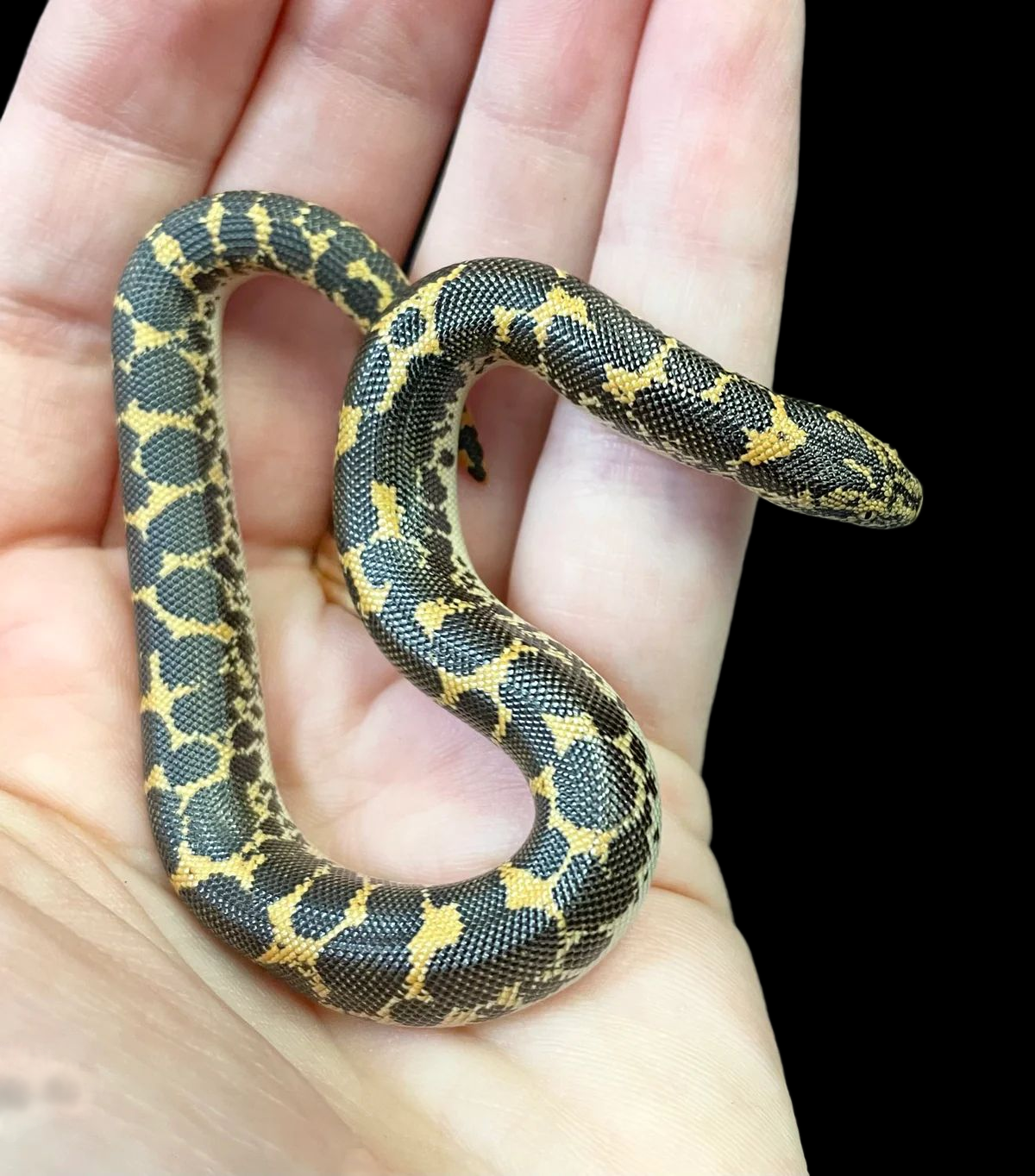Photo Disclaimer
Description
Kenyan Sand Boa (Het Anery / Albino / Paradox Albino)
Eryx colubrinus
Common Names: Kenyan Sand Boa, East African Sand Boa
Species Overview
-
Size: Adults typically reach 18–30 inches (45–75 cm), with females larger and bulkier than males.
-
Appearance:
-
Albino: Expresses bright orange and white coloration with red or pink eyes due to the absence of melanin.
-
Paradox Albino: A unique expression of albino where random darker patches of pigment appear against the otherwise orange-and-white albino body, giving a “paint-splattered” look.
-
Het Anery: Carries the recessive Anerythristic gene but does not show it visually.
Overall, these boas show a striking high-contrast albino pattern sometimes broken by paradox markings, while carrying the Anery trait unseen.
-
-
Distribution: Native to East Africa, including Kenya, Ethiopia, and surrounding regions.
-
Habitat: Found in semi-arid savannahs, scrublands, and deserts, where they burrow into loose sand or soil.
-
Behaviour: Fossorial, spending most of their time underground. They are nocturnal ambush predators, waiting just under the substrate to capture prey.
Captive Care
-
Enclosure: A 20-gallon long tank or equivalent enclosure is suitable for most adults. Provide deep, loose substrate (sand, aspen, or sand/soil mix) for burrowing. A water dish and at least one hide should also be included.
-
Temperature & Humidity: Maintain an ambient range of 78–82°F (25–28°C) with a basking spot of 90–95°F (32–35°C). Night drops to 72–75°F (22–24°C) are acceptable. Humidity should be kept relatively low, around 30–50%, to reflect their native conditions.
-
Diet: Feed juveniles pinky mice every 5–7 days; adults every 10–14 days on small rodents. Avoid overfeeding, as sand boas are prone to obesity.
-
Behaviour in Captivity: Kenyan sand boas are generally docile and secretive. They tolerate handling well but prefer remaining burrowed most of the time.
-
Special Considerations: Success in captivity requires deep substrate to encourage natural burrowing behaviour.
Genetics Note
-
Albino (Recessive): Expressed here as the base morph, producing bright orange-and-white coloration.
-
Paradox Albino (Random Expression): A rare form of albino that shows patches of retained pigment, giving an unusual mottled look. The inheritance is not fully understood, but it is selectively bred.
-
Het Anery (Recessive Carrier): This boa carries one copy of the Anerythristic gene but does not display it visually.
-
Core husbandry remains the same as wild-type Kenyan Sand Boas.

